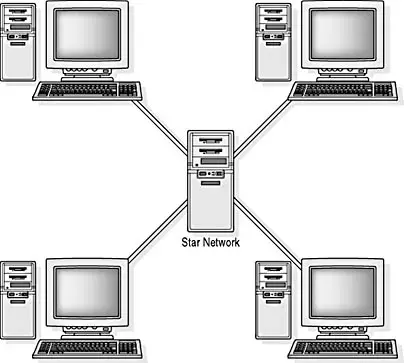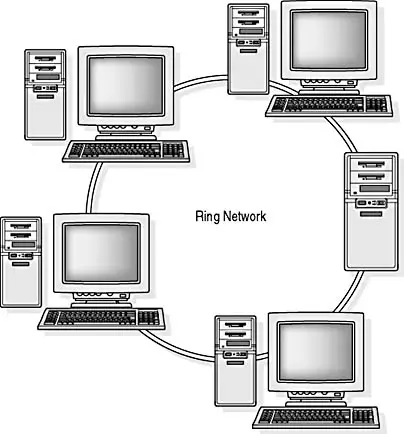NOTE
The illustrations that follow should not be used as exact wiring diagrams, rather as sample network designs.
Star Topology
In a star network (see Figure 18.1), all devices are connected to a central point called a hub. These hubs collect and distribute the flow of data within the network. Signals from the sending computer go to the hub and are then transmitted to all computers on the network. Large networks can feature several hubs. A star network is easy to troubleshoot because all information goes through the hub, making it easier to isolate problems.

Figure 18.1 Star topology
Bus Topology
In a bus network (see Figure 18.2), all devices are connected to a single linear cable called a trunk (also known as a backbone or segment). Both ends of the cable must be terminated (like a SCSI bus) to stop the signal from bouncing. Because a bus network does not have a central point, it is more difficult to troubleshoot than a star network. A break or problem at any point along the bus can cause the entire network to go down.
NOTE
A bus network is often referred to as an Ethernet network.

Figure 18.2 Bus topology
Ring Topology
In a ring network (see Figure 18.3), all workstations and servers are connected in a closed loop. There are no terminating ends; therefore, if one computer fails, the entire network will go down. Each computer in the network acts like a repeater and boosts the signal before sending it to the next station. This type of network transmits data by passing a "token" around the network. If the token is free of data, a computer waiting to send data grabs it, attaches the data and the electronic address to the token, and sends it on its way. When the token reaches its destination computer, the data is removed and the token sent on.
NOTE
This type of network is commonly called a token ring network.

Figure 18.3 Ring topology